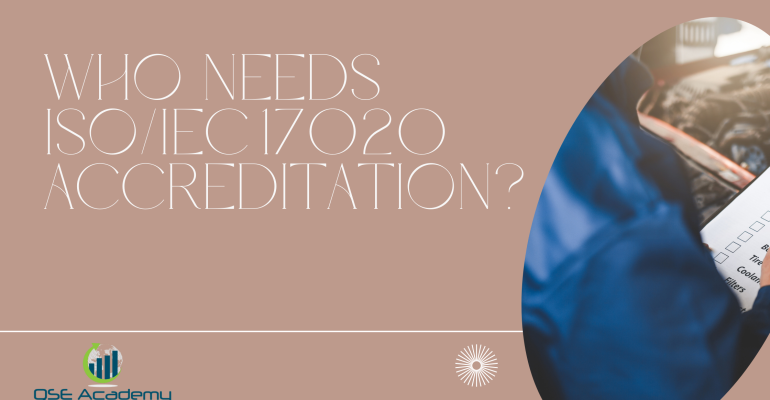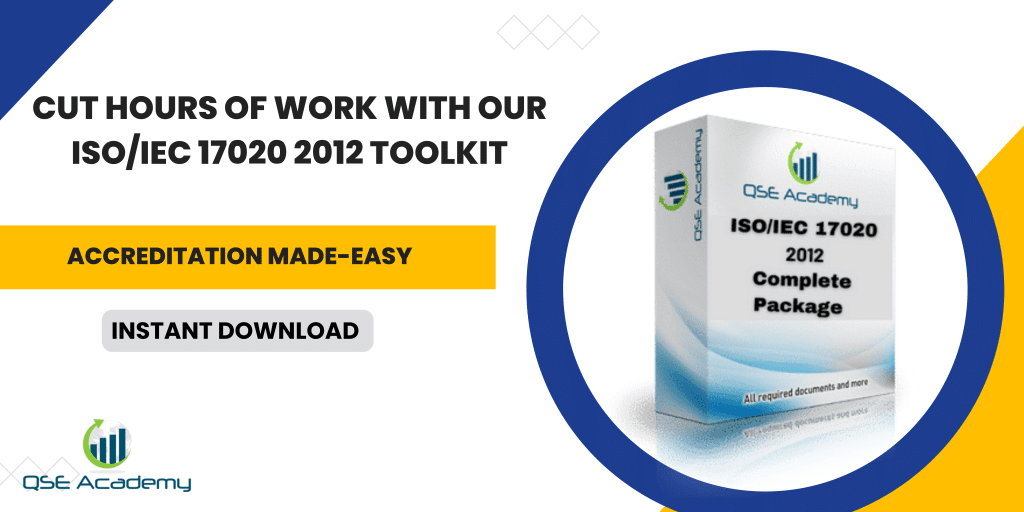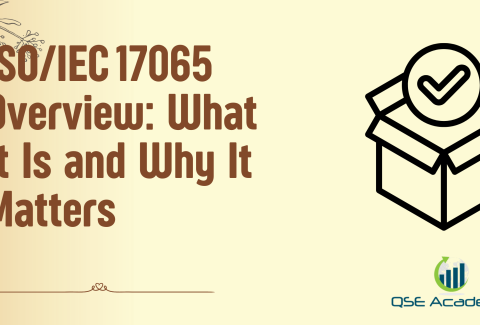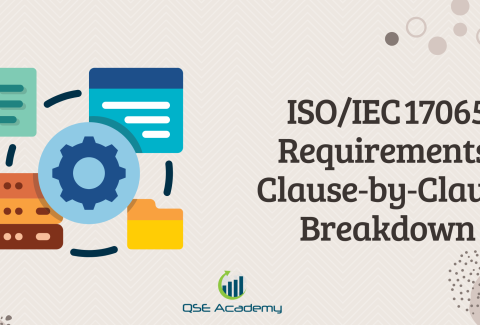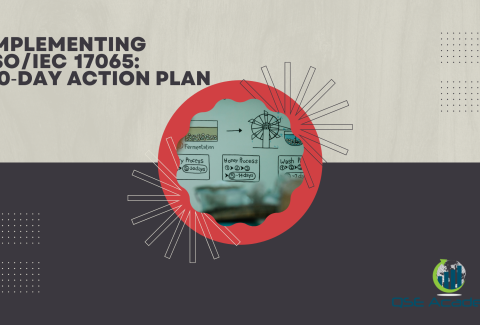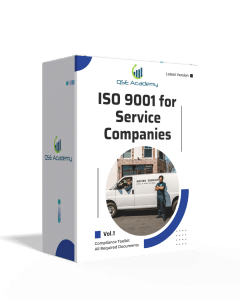Who Needs ISO/IEC 17020 Accreditation?
Last Updated on October 22, 2025 by Hafsa J.
Why ISO/IEC 17020 Accreditation Matters
If you’ve ever wondered, “Does my organization really need ISO/IEC 17020 accreditation?” — you’re asking the right question.
I’ve seen many teams jump into accreditation without realizing what 17020 is actually designed for. And just as often, I’ve met inspection bodies that should be accredited but don’t realize how much credibility they’re losing by skipping it.
Here’s the thing: ISO/IEC 17020 isn’t just another management system standard. It’s the global benchmark that tells clients, regulators, and certification bodies,
“You can trust our inspections.”
It proves that your organization’s judgments are impartial, your inspectors are competent, and your processes are consistent — no matter who performs the work or where it’s done.
In my experience helping companies across sectors — from construction and energy to manufacturing and government agencies — confusion usually starts with this simple misunderstanding:
people think accreditation is optional or “nice to have.” But for inspection bodies, it’s the difference between being recognized and being ignored.
In this article, we’ll break down exactly who needs ISO/IEC 17020 accreditation, how to know if your organization qualifies, and when accreditation is legally required or strategically essential.
By the end, you’ll know whether pursuing it is a must-have compliance move or a smart competitive advantage for your business.
Now that we’ve set the stage, let’s clarify what ISO/IEC 17020 really is — and why it exists in the first place.
Understanding ISO/IEC 17020 – The Framework for Inspection Bodies
Before you can determine whether your organization needs ISO/IEC 17020 accreditation, it’s essential to understand what this standard actually governs.
ISO/IEC 17020 is the international framework that sets out the general criteria for the operation of inspection bodies.
Its primary goal is to ensure that inspections are performed impartially, competently, and consistently — regardless of the type of product, process, or system being inspected.
Purpose and Scope
| Focus Area | Description |
|---|---|
| Objective | To provide confidence that inspection results are accurate, impartial, and based on consistent procedures. |
| Applies To | Organizations conducting inspections on behalf of clients, regulators, or internal stakeholders. |
| Outputs | Inspection reports or certificates confirming conformity with defined requirements. |
| Key Competencies Required | Technical knowledge, impartial decision-making, and documented inspection processes. |
ISO/IEC 17020 does not cover testing or calibration activities — those belong to ISO/IEC 17025.
Instead, it governs the assessment of conformity through examination, observation, or verification.
How ISO/IEC 17020 Differs from Other Standards
| Standard | Main Purpose | Core Focus | Typical Output |
|---|---|---|---|
| ISO 9001 | General quality management | Customer satisfaction, process consistency | Internal certification |
| ISO/IEC 17025 | Testing and calibration laboratories | Measurement accuracy and traceability | Test/calibration report |
| ISO/IEC 17020 | Inspection bodies | Conformity verification and judgment | Inspection report or certificate of conformity |
This comparison makes one thing clear:
ISO/IEC 17020 is about evaluating compliance — not measuring data.
Types of Inspection Bodies (A, B, and C)
The standard classifies inspection bodies into three types based on their level of independence:
| Type | Independence Level | Description | Typical Example |
|---|---|---|---|
| Type A | Fully independent | Third-party inspection body performing impartial inspections for external clients. | Independent inspection firms or certification bodies. |
| Type B | Partially independent | In-house inspection department that performs services only for its parent organization but remains functionally independent. | Quality department in a manufacturing company inspecting internal processes. |
| Type C | Dependent (lowest independence) | Performs inspections for both internal and external clients, with safeguards to ensure impartiality. | Manufacturer offering inspection services to external customers. |
Understanding which type your organization falls under is the first step in knowing whether ISO/IEC 17020 accreditation applies to you — and how strict your impartiality controls must be.
Key Insight
ISO/IEC 17020 creates trust in inspection results.
It’s not about making your operations look organized on paper — it’s about proving that your inspection decisions are objective, defensible, and internationally recognized.
Organizations That Require ISO/IEC 17020 Accreditation
Not every organization needs ISO/IEC 17020 accreditation — but for those that perform inspection activities, it’s often mandatory or at least strategically necessary.
Accreditation formally proves that your inspections are impartial, technically sound, and recognized internationally under the ILAC (International Laboratory Accreditation Cooperation) system.
So, who actually needs it? Let’s break it down by sector and activity type.
Sectors Where ISO/IEC 17020 Accreditation Is Required or Expected
| Sector | Typical Inspection Activities | Why Accreditation Is Needed |
|---|---|---|
| Construction & Civil Engineering | Site supervision, structural and welding inspections, material conformity checks | Legal or contractual requirement for safety and quality verification |
| Manufacturing & Supply Chain | Supplier audits, product conformity verification, in-process inspections | Builds trust with clients and regulators; often required for export contracts |
| Government & Regulatory Bodies | Licensing, certification, safety compliance inspections | Accreditation confirms impartiality and technical credibility in enforcement |
| Energy & Utilities | Inspection of pipelines, pressure vessels, power plants, and safety systems | Ensures operational safety and regulatory compliance |
| Transportation & Automotive | Vehicle inspections, roadworthiness checks, emissions testing | Required under national laws or public safety programs |
| Environmental & Waste Management | Environmental site assessments, waste-handling inspections | Demonstrates technical competence in regulatory monitoring |
| Healthcare & Medical Devices | Facility safety inspections, sterilization process verification | Ensures impartial oversight in patient and product safety compliance |
How to Recognize Whether You Operate as an Inspection Body
| Indicator | Description | Interpretation |
|---|---|---|
| You perform visual or functional checks | You assess products, systems, or installations against set criteria. | You’re likely operating as an inspection body. |
| You issue inspection reports or certificates | Your deliverables include a decision of conformity (pass/fail). | Accreditation strengthens credibility and trust. |
| Your work supports regulatory or certification decisions | Authorities or clients rely on your findings. | Accreditation is often mandatory. |
| Your inspectors use documented procedures | You apply defined methods to verify compliance. | Accreditation aligns with ISO/IEC 17020 requirements. |
Key Insight
If your organization’s main service involves examining, observing, or verifying something against a standard or regulation, then ISO/IEC 17020 accreditation is likely relevant or required.
This applies whether you’re a private company inspecting equipment for clients, a government entity verifying compliance, or an internal unit ensuring product quality before release.
When ISO/IEC 17020 Accreditation Is Mandatory vs. Voluntary
Understanding whether ISO/IEC 17020 accreditation is required by law or strategically optional is essential before you begin the process.
While some sectors can’t legally operate without it, others use accreditation as a powerful trust signal to win contracts, build credibility, or demonstrate technical integrity.
Let’s separate the two scenarios clearly.
Mandatory Accreditation – When It’s a Legal or Regulatory Requirement
| Context | Description | Examples |
|---|---|---|
| Regulatory or Government Inspections | Required when inspections relate to public safety, environmental control, or statutory compliance. | Vehicle inspection centers, elevator and pressure vessel inspectors, building safety authorities. |
| Certification & Conformity Assessment Programs | Accreditation required to issue inspection reports used in product certification or CE/UKCA conformity declarations. | Third-party inspection bodies verifying product compliance for import/export. |
| Energy and Infrastructure Safety | Accreditation demanded by law or insurance bodies to ensure inspection reliability. | Gas pipeline, refinery, or electrical plant inspection agencies. |
| Accredited Supplier Qualification | Multinational clients require accredited inspection results as part of supplier evaluation. | Oil & gas, aerospace, and automotive OEM supplier audits. |
In these cases, you simply cannot operate or issue recognized reports without ISO/IEC 17020 accreditation.
Voluntary Accreditation – When It’s a Strategic Advantage
| Context | Description | Examples |
|---|---|---|
| Internal Quality or Supplier Inspections | Accreditation enhances credibility, even if not required. | In-house QA departments performing independent verification for customers. |
| Competitive Differentiation | Voluntary accreditation builds confidence with clients and regulators. | Engineering consulting firms, construction QC divisions. |
| Market Expansion or Tender Eligibility | Many tenders specify “accredited inspection body” as a qualification criterion. | Construction supervision, oil & gas field inspections, renewable energy projects. |
| Customer or Brand Trust | Accreditation proves impartiality and consistency. | Private inspection firms seeking recognition in international markets. |
Voluntary accreditation often becomes de facto mandatory once clients, regulators, or supply chains begin demanding proof of competence.
Comparison Overview
| Decision Factor | Mandatory Accreditation | Voluntary Accreditation |
|---|---|---|
| Legal Requirement | Enforced by regulation or authority. | Not legally required. |
| Client Expectation | Essential for official recognition. | Adds credibility and trust. |
| Business Impact | Enables operation and report acceptance. | Improves market access and reputation. |
| Cost vs. Benefit | Non-compliance can stop operations. | Investment yields competitive edge. |
Key Insight
Even if accreditation isn’t legally enforced, market reality often makes it unavoidable.
In regulated industries like construction, automotive, or energy, clients trust only accredited inspection bodies.
So while the law may say “optional,” the market often says “essential.”
Eligibility Checklist – How to Know if You Qualify
Before pursuing ISO/IEC 17020 accreditation, your organization must determine whether it truly fits the definition of an inspection body under the standard.
This step is critical: many organizations invest time and resources preparing for accreditation only to realize later that their activities don’t fully qualify.
The goal here is to help you self-diagnose your eligibility clearly — and confidently.
Step-by-Step Eligibility Evaluation
| Step | Key Question | Why It Matters | Likely Outcome |
|---|---|---|---|
| 1 | Do you perform inspections, not tests or calibrations? | ISO/IEC 17020 applies only to inspection activities — observing, assessing, and judging conformity. | If your work is measurement-based, you likely need ISO/IEC 17025 instead. |
| 2 | Do you issue inspection reports or conformity certificates? | The main deliverable of an inspection body is a judgment, not raw data. | If you deliver pass/fail or compliance decisions, you fit 17020. |
| 3 | Are your decisions independent and impartial? | Accreditation bodies verify that inspectors aren’t influenced by financial or operational bias. | If your decisions are subject to internal pressure, you may not qualify as Type A or B. |
| 4 | Do clients or authorities rely on your results to make safety or compliance decisions? | If your findings affect regulatory approvals or certification, accreditation is often mandatory. | A strong indicator that 17020 applies. |
| 5 | Do you follow documented inspection procedures and maintain records? | ISO/IEC 17020 requires consistency and traceability of inspections. | Without structured procedures, accreditation will be difficult. |
Eligibility Summary Table
| Criterion | “Yes” Response → Eligible | “No” Response → Not Eligible |
|---|---|---|
| Performs inspection activities | ✓ | |
| Provides conformity judgments | ✓ | |
| Operates with documented procedures | ✓ | |
| Demonstrates independence and impartiality | ✓ | |
| Produces data only (no judgment) | ✓ | |
| Conducts internal checks for internal use only | ✓ |
How Accreditation Bodies Evaluate Eligibility
| Evaluation Area | What They Look For | Typical Evidence |
|---|---|---|
| Scope Definition | Clear description of inspection services. | Scope statement and inspection plan. |
| Independence Structure | Type A, B, or C classification. | Organizational chart and impartiality policy. |
| Inspector Competence | Qualifications and authorizations. | Training records and witnessed inspections. |
| Management System | Existence of documented procedures and records control. | Quality manual, SOPs, and records list. |
Pro Tip
If your organization only verifies its own internal processes or products, you may still apply as a Type C inspection body — provided you can demonstrate functional independence between inspection and production roles.
The best way to confirm eligibility is to perform an internal gap analysis or pre-assessment against ISO/IEC 17020 clauses before contacting an accreditation body.
Benefits of ISO/IEC 17020 Accreditation for Eligible Organizations
Once your organization confirms eligibility, the next question is natural:
“What do we actually gain from ISO/IEC 17020 accreditation?”
The benefits extend far beyond compliance. Accreditation strengthens your credibility, builds client confidence, and opens access to markets and tenders that require recognized inspection bodies.
Let’s break these advantages into measurable categories.
1. Regulatory and Legal Recognition
| Benefit | Description | Impact |
|---|---|---|
| Official acceptance by authorities | Accredited inspection reports are legally recognized by regulators and certification schemes. | Avoids duplicate audits and re-inspections. |
| Meets statutory requirements | Many sectors (energy, construction, automotive) require accredited inspection for safety compliance. | Enables continued operation and licensing. |
| Assures impartiality and trust | Accreditation bodies verify independence, reducing conflict-of-interest risks. | Builds long-term credibility with clients and authorities. |
2. Business and Market Advantages
| Benefit | Description | Impact |
|---|---|---|
| Tender eligibility | Many public and private contracts accept only accredited inspection bodies. | Expands access to high-value bids and international projects. |
| Competitive differentiation | Accreditation acts as a mark of excellence and reliability. | Positions your organization above non-accredited competitors. |
| Client confidence | Customers value validated competence and impartial reporting. | Leads to stronger partnerships and repeat business. |
3. Operational and Quality Benefits
| Benefit | Description | Impact |
|---|---|---|
| Consistent inspection performance | ISO/IEC 17020 enforces documented, standardized procedures. | Reduces variation and errors between inspectors. |
| Continuous improvement | Internal audits, management reviews, and corrective actions drive performance. | Improves quality culture and accountability. |
| Traceable decision-making | All inspections must be evidence-based and recorded. | Provides full traceability for audits and client verification. |
4. International Credibility and Recognition
| Benefit | Description | Impact |
|---|---|---|
| Global acceptance through ILAC MRA | Accredited inspection results are recognized across member economies. | Simplifies trade and cross-border compliance. |
| Partnership with accredited networks | Collaboration with other accredited bodies becomes seamless. | Strengthens industry positioning and collaboration. |
Summary of Benefits
| Category | Core Value Delivered |
|---|---|
| Regulatory Compliance | Meets legal and safety inspection requirements. |
| Market Access | Opens national and international business opportunities. |
| Reputation | Establishes technical credibility and client trust. |
| Operational Efficiency | Standardizes inspection methods and improves reliability. |
Key Insight
ISO/IEC 17020 accreditation doesn’t just prove competence — it multiplies trust.
For regulators, it means assurance. For clients, it means reliability. And for your organization, it becomes a strategic business asset, not just a compliance checkbox.
Common Misconceptions About Who Needs ISO/IEC 17020 Accreditation
Many organizations hesitate to pursue ISO/IEC 17020 because of misunderstandings about what it covers and who it applies to.
In practice, these misconceptions often cause either over-compliance (pursuing accreditation unnecessarily) or under-compliance (missing legal or contractual requirements).
Let’s clarify the most common myths.
Misconception 1: “We already have ISO 9001, so we don’t need ISO 17020.”
| Comparison Area | ISO 9001 | ISO/IEC 17020 |
|---|---|---|
| Purpose | General quality management and customer satisfaction. | Technical competence and impartiality in inspections. |
| Outcome | Certification showing management consistency. | Accreditation proving technical validity of inspection judgments. |
| Recognition | By clients and supply chains for QMS compliance. | By regulators and certification bodies for inspection reliability. |
Reality:
ISO 9001 supports management systems but doesn’t demonstrate inspection competence.
ISO/IEC 17020 builds upon that foundation to ensure technical credibility in conformity assessment.
Misconception 2: “We only inspect our own products, so we can’t get accredited.”
| Situation | Truth |
|---|---|
| You perform inspections internally, but maintain functional independence. | You can qualify as a Type C inspection body under ISO/IEC 17020. |
| You separate production and inspection roles to ensure impartiality. | Accreditation remains possible if independence safeguards are in place. |
Reality:
Internal inspection units are eligible as long as they can show that decisions are made objectively and free from production influence.
Misconception 3: “Our clients don’t ask for accreditation, so it’s not worth it.”
| Factor | Why This View Is Risky |
|---|---|
| Market evolution | Regulatory frameworks and client expectations often change suddenly. |
| Tender requirements | Accreditation is frequently added to pre-qualification criteria. |
| Reputation risk | Lack of accreditation can undermine credibility when competitors are accredited. |
Reality:
Even if clients don’t demand it today, accreditation future-proofs your organization against regulatory or market shifts.
Misconception 4: “17020 is only for large inspection companies.”
| Organization Type | Applicability |
|---|---|
| Small or specialized firms | Can achieve accreditation for niche scopes (e.g., coating inspection, pressure tests). |
| Medium-size internal inspection teams | Eligible as Type B or C bodies with documented independence. |
| Large multi-sector inspection firms | Typically pursue Type A accreditation for broader recognition. |
Reality:
ISO/IEC 17020 is scalable. The same principles apply whether you inspect ten items a year or ten thousand — the scope simply adapts to your operations.
Quick Summary
| Misconception | Actual Truth |
|---|---|
| “ISO 9001 is enough.” | 17020 is a technical competence standard, not a quality system duplicate. |
| “Internal teams can’t be accredited.” | They can, with independence safeguards. |
| “Clients don’t ask for it.” | Market and regulatory changes make it increasingly necessary. |
| “Only large firms need it.” | Accreditation is scalable and beneficial to all inspection bodies. |
Key Insight
The biggest misconception is treating ISO/IEC 17020 as a paperwork exercise.
In reality, it’s a strategic tool that validates your inspection process, builds lasting trust, and sets your organization apart in competitive or regulated industries.
FAQs – Common Eligibility Questions
Before starting the accreditation process, most organizations face similar uncertainties.
Below are the most frequently asked questions about who qualifies for ISO/IEC 17020 accreditation, what prerequisites exist, and how to prepare effectively.
FAQ 1: Can a manufacturer apply for ISO/IEC 17020 accreditation?
| Question | Answer |
|---|---|
| Can a company that manufactures products also be an accredited inspection body? | Yes — if it maintains impartiality and separation between production and inspection functions. |
| Applicable Type | Type C (dependent inspection body). |
| Condition | The inspection department must operate independently from design, production, and sales teams. |
| Example Context | A manufacturer offering third-party inspection services for its own and external products. |
In summary:
Manufacturers can qualify if they can prove their inspections are objective, traceable, and free from bias.
FAQ 2: Do we need ISO 9001 before applying for ISO/IEC 17020?
| Question | Answer |
|---|---|
| Is ISO 9001 certification a prerequisite? | No, it’s not mandatory. |
| Why it helps | ISO 9001-certified organizations already have management processes (document control, internal audits, management reviews) that align with ISO/IEC 17020 requirements. |
| Alternative | You can build a dedicated 17020 management system from scratch if ISO 9001 isn’t in place. |
Bottom line:
ISO 9001 isn’t required — but having it makes the transition smoother and reduces preparation time.
FAQ 3: Can an organization be both ISO/IEC 17020 and ISO/IEC 17025 accredited?
| Question | Answer |
|---|---|
| Can we hold both accreditations? | Yes — if your activities include both inspection and testing under distinct scopes. |
| Typical Scenario | Construction firms or materials laboratories that perform on-site inspections and laboratory testing. |
| Requirement | Separate documented scopes, technical procedures, and staff roles for each accreditation. |
| Benefit | Full-service credibility: inspection + testing recognized under international accreditation. |
Tip:
Clearly define which services fall under each standard before applying to avoid overlap or confusion during assessment.
FAQ 4: Who grants ISO/IEC 17020 accreditation?
| Question | Answer |
|---|---|
| Who issues the accreditation? | National or regional accreditation bodies that are ILAC MRA members. |
| Examples | UKAS (UK), ENAS (UAE), IAS (US), DAkkS (Germany), COFRAC (France). |
| Recognition | Accreditation from these bodies ensures international acceptance of your inspection reports. |
| How to confirm legitimacy | Check if the accreditation body appears in the ILAC MRA signatory list (www.ilac.org). |
FAQ 5: How long does ISO/IEC 17020 accreditation take?
| Phase | Typical Duration | Key Activities |
|---|---|---|
| Preparation | 2–4 months | Gap analysis, system documentation, staff training |
| Internal Audit & Review | 1 month | Verifying readiness and implementing corrections |
| Accreditation Assessment | 1–2 months | Document review, on-site witnessing |
| Total Estimated Duration | 4–7 months | Depending on complexity and readiness level |
Key takeaway:
A well-prepared organization with trained staff and documented procedures can complete accreditation in less than six months.
Knowing When ISO/IEC 17020 Adds Real Value
ISO/IEC 17020 accreditation isn’t just a certificate to display — it’s a formal validation of trust, competence, and impartiality.
It proves that your inspection results can stand up to regulatory scrutiny, client audits, and international acceptance.
Whether you operate as a government agency, a private engineering firm, or an internal quality department, the key question remains the same:
“Do clients, regulators, or safety decisions rely on our inspection results?”
If the answer is yes, then ISO/IEC 17020 accreditation isn’t optional — it’s essential.
Key Takeaways
| Focus Area | ISO/IEC 17020 Value |
|---|---|
| Technical Credibility | Demonstrates that inspections are consistent, competent, and impartial. |
| Regulatory Recognition | Makes your inspection reports legally and internationally acceptable. |
| Market Advantage | Builds client trust and unlocks access to accredited contracts and tenders. |
| Operational Discipline | Standardizes procedures, roles, and reporting structures. |
| Strategic Growth | Positions your organization as a reliable authority in conformity assessment. |
What To Do Next
| Step | Action | Outcome |
|---|---|---|
| 1 | Map your inspection activities and determine your Type (A, B, or C). | Clear understanding of your independence level. |
| 2 | Perform an internal gap analysis against ISO/IEC 17020 clauses. | Identifies strengths and areas to improve. |
| 3 | Document your procedures, inspection methods, and impartiality policy. | Builds your foundation for accreditation. |
| 4 | Contact your national accreditation body (e.g., UKAS, ENAS, IAS). | Begin the formal application process. |
Final Insight
In my experience, organizations that treat ISO/IEC 17020 as a strategic investment — not a compliance chore — see the fastest growth and most sustainable trust from clients and regulators alike.
It’s more than a standard; it’s a framework for reliability and integrity that elevates your entire operation.
Next Step:
If you’re unsure whether your organization fully qualifies, download QSE Academy’s “ISO/IEC 17020 Eligibility & Readiness Toolkit.”
It includes a self-assessment checklist, process templates, and documentation samples to help you determine where you stand — and how to move toward full accreditation with confidence.
I hold a Master’s degree in Quality Management, and I’ve built my career specializing in the ISO/IEC 17000 series standards, including ISO/IEC 17025, ISO 15189, ISO/IEC 17020, and ISO/IEC 17065. My background includes hands-on experience in accreditation preparation, documentation development, and internal auditing for laboratories and certification bodies. I’ve worked closely with teams in testing, calibration, inspection, and medical laboratories, helping them achieve and maintain compliance with international accreditation requirements. I’ve also received professional training in internal audits for ISO/IEC 17025 and ISO 15189, with practical involvement in managing nonconformities, improving quality systems, and aligning operations with standard requirements. At QSE Academy, I contribute technical content that turns complex accreditation standards into practical, step-by-step guidance for labs and assessors around the world. I’m passionate about supporting quality-driven organizations and making the path to accreditation clear, structured, and achievable.

